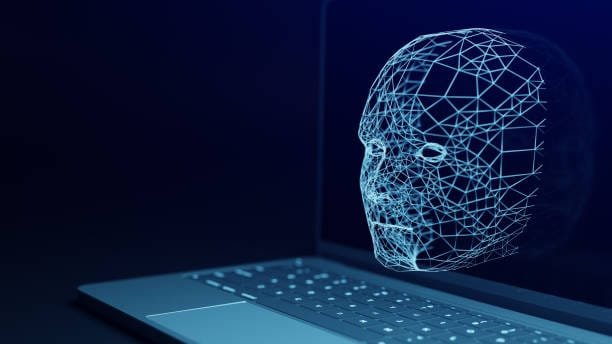What AI Does Copilot Use? An In-Depth Guide
Artificial Intelligence (AI) is transforming industries, from software development to aviation. One notable application of AI is in tools like Microsoft Copilot, which has garnered significant attention for its integration into various professional and creative workflows. This blog explores the technology behind Microsoft Copilot, its applications, and how it benefits developers, designers, and even aviation scenarios. Additionally, we’ll address some related topics, including copilot programming and the role of copilots in aviation.
What AI Does Microsoft Copilot Use?
Microsoft Copilot uses OpenAI’s GPT (Generative Pre-trained Transformer) model as its backbone. This powerful AI architecture enables Copilot to understand, generate, and optimize human-like code and text suggestions. Microsoft has integrated this AI into its productivity tools like GitHub Copilot and Microsoft 365 Copilot, making tasks such as coding, writing, and planning more efficient.
Key Features of AI in Microsoft Copilot:
- Natural Language Processing (NLP): Copilot interprets plain English instructions and translates them into functional code or meaningful text.
- Contextual Awareness: It understands the context of the user’s task, making its suggestions relevant and precise.
- Multi-Language Support: Copilot is compatible with various programming languages, including Python, JavaScript, and C#.
- Learning from Data: Built on OpenAI’s large datasets, it adapts to different user needs by learning from vast repositories of publicly available code.
What Is Copilot Programming?
Copilot programming refers to using AI-driven tools like GitHub Copilot to assist developers in writing, debugging, and optimizing code. Unlike traditional programming methods, where developers write every line of code manually, copilot programming leverages AI to suggest code snippets, functions, or even entire algorithms based on the context.
Benefits of Copilot Programming:
- Time Efficiency: Automates repetitive coding tasks.
- Error Reduction: Identifies and suggests corrections for potential bugs.
- Learning Tool: Beginners can learn faster by studying AI-suggested code.
Example:
A developer asks Copilot for help with a function to sort numbers in Python:
python
Copy code
def sort_numbers(numbers):
# AI-generated suggestion
return sorted(numbers)
Copilot instantly generates a clean and functional solution.
What AI Developer Do?
AI developers are professionals who design, develop, and deploy AI systems. Their work revolves around training machine learning models, integrating AI into applications, and fine-tuning algorithms for optimal performance.
Skills Required for an AI Developer:
- Programming Knowledge: Proficiency in Python, R, or Java.
- Understanding AI Models: Familiarity with NLP, computer vision, and neural networks.
- Data Handling: Expertise in data preprocessing and handling big datasets.
- Tool Usage: Working knowledge of AI frameworks like TensorFlow, PyTorch, or OpenAI.
How to Use Video Copilot in After Effects
Video Copilot is a popular plugin for Adobe After Effects, used to create stunning visual effects and motion graphics. It doesn’t rely on AI in the same way as Microsoft Copilot but offers pre-designed tools and templates to streamline creative work.
Steps to Use Video Copilot:
- Install the Plugin: Download and install Video Copilot from its official website.
- Choose a Preset: Browse through its library for templates like explosions or 3D effects.
- Apply to Timeline: Drag and drop the effect onto your After Effects timeline.
- Customize: Adjust parameters like color, intensity, and motion to fit your project.
What Happens If the Pilot and Copilot Die?
In the rare and catastrophic event where both the pilot and copilot are incapacitated, modern aviation relies on multiple safeguards:
- Autopilot Systems: Advanced autopilot systems can stabilize the plane and guide it to a safe altitude.
- Ground Assistance: Air traffic control can guide a trained passenger or crew member to operate basic controls.
- Advanced AI in Aviation: Emerging AI systems are being tested to manage critical scenarios autonomously.
What Is the Role of a Copilot?
A copilot, also known as the first officer, is the second-in-command in an aircraft. Their primary role is to assist the captain (pilot) in navigation, communication, and managing flight systems.
Key Responsibilities:
- Flight Operations: Shares duties like takeoff, cruising, and landing.
- System Monitoring: Ensures all aircraft systems are functioning properly.
- Emergency Handling: Assists in decision-making during emergencies.
The role of the copilot emphasizes teamwork, as both pilot and copilot must work in harmony to ensure flight safety.
Connecting AI and Copilot Systems
The term “copilot” has transcended aviation, finding new meaning in AI-powered tools like Microsoft Copilot. Both share the essence of assisting the primary operator, whether it’s a pilot navigating the skies or a developer writing code.
Similarities:
- Supportive Role: Both copilots aid the primary operator in achieving goals efficiently.
- Safety and Accuracy: Whether it’s avoiding flight errors or coding mistakes, copilots ensure precision.
Conclusion
AI-driven copilots like Microsoft Copilot are revolutionizing productivity by integrating advanced technologies like OpenAI’s GPT. From programming assistance to seamless text creation, these tools exemplify how AI can enhance human capabilities.
At the same time, the traditional role of copilots in aviation highlights the importance of teamwork, precision, and safety in critical operations. By understanding the applications of AI copilots and their traditional counterparts, we can appreciate how technology continues to evolve while retaining its foundational purpose—assisting humans to achieve more.


